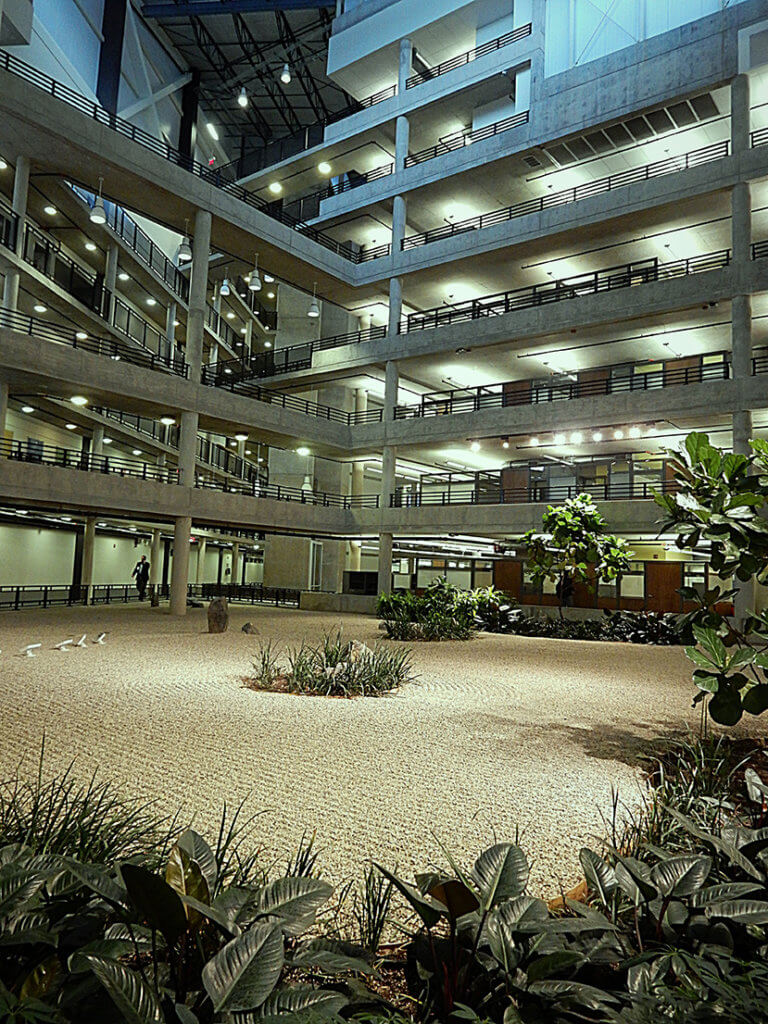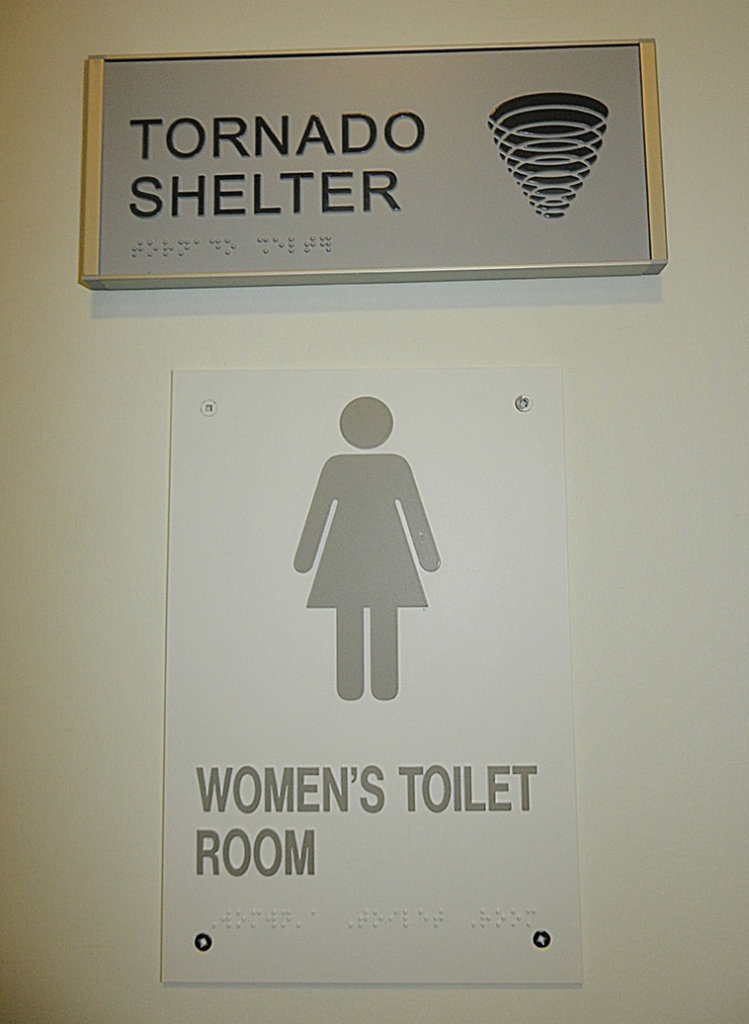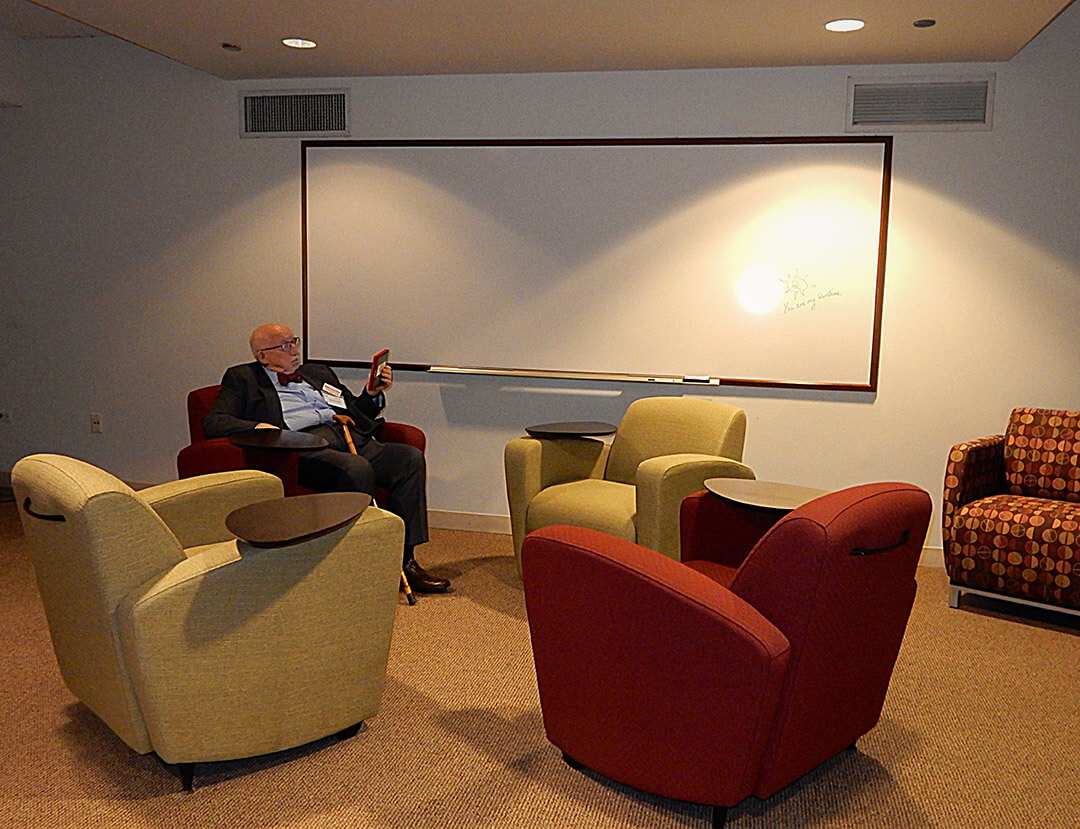By Linda Gasparello
Where Scientists Sleep
Last week my husband, Llewellyn King, and I abandoned the delights of West Warwick, R.I., to visit Chicago – actually, a part of Chicagoland that few visitors get to see.
Llewellyn was a speaker at a conference held at Argonne National Laboratory, just outside of Chicago. Argonne is the multidisciplinary science and engineering research center, born out of the University of Chicago’s work on the Manhattan Project in the 1940s.
The lab, which occupies 1,500 acres, came as a total surprise for our Uber driver, a Chicago native who used to drive trucks professionally. “I’ve driven past this place many times, but I never knew what was goin’ on,” he said.
We had some difficulty finding Argonne’s Main North Gate and delay getting our ore-arranged passes. Once cleared for entry, we had to drive behind a security vehicle to our hotel: the Argonne Guest House, which is Building 240 on the “campus.” It is where most people stay for conferences, short research visits and invited tours of the site, thus avoiding the main security gate rigamarole.
Our driver thought all this cloak-and-dagger stuff was a hoot, but Llewellyn, who has visited Argonne many times, wasn’t entertained. He wanted his dinner and a glass, or two, of red wine.
The guest house is a fine example of 1970s university dormitory architecture, more Brutalist than humanist. But what the building lacks in design, it more than makes up for in setting: It backs onto some of the Argonne site’s wooded acres.
The lobby and the guest rooms don’t inspire one to linger. But you might want to hang out with colleagues in the elevator lobby on any of the guest floors. Each has comfortable club chairs, equipped with wooden swivel trays and a huge whiteboard hanging on a wall – perfect for a pre-breakfast solving of isotope burn-up equations.
Zen at Work

The Zen garden in the seven-story Theory and Computing Sciences Center. Photo: Linda Gasparello.
As you drive up to the Theory and Computing Sciences Center on the Argonne site, your heart will beat a little faster: This building – Building 240 — with its jutting, pierced concrete slabs and glass walls, houses state-of-the-art supercomputing systems. You sense from its great, gray exterior that the interior won’t be filled with floors of sensory-deprivation cubbies for techies.
It isn’t. The building, according to the lab, “was designed to be an open and flexible workspace to encourage the free flow of ideas between scientists at Argonne as well as the technology to connect researchers across the globe.” Its seven stories wrap around a Zen garden.
There are cloth-lined cubicles with whiteboards — on some of which I saw scrawled equations. But on the ground floor no glass walls separate them from the garden. Surely, gazing at the garden and ambling around it through the open hall must reduce workers’ stress; unless you’re a worker who is stressed by the thought of a snake curled up in your cubicle.
The garden’s raked, gray gravel sits upon dirt and occasionally critters – frogs, rodents and even garden-variety snakes — break through the garden’s surface and can be found among its plants and rocks.
“We like ’em. They’re engineers,” one ground-floor worker told me.
Behavioral Science

Door sign in the Theory and Computing Sciences Center. Photo: Linda Gasparello.
“Scientists are literal.” That’s how Gilbert Brown, director of the nuclear engineering program at the University of Massachusetts Lowell, explained why the Theory and Computing Sciences Center’s bathrooms are called “toilet rooms.”
“The rooms have toilets but no baths,” he said.
Makes sense to me.
When I pointed out to another nuclear engineer that all the push pins on a bulletin board outside the center’s conference room were placed in a rectangle, he said unhesitatingly, “Scientists are neat as pins.”
Doe, Oh, Dear
The white fallow deer herd that has roamed the Argonne site since the lab’s inception in 1946 – and has caused visitors sometimes to speculate on the nature of the experiment that produced their unusual coloring – has dwindled to one doe.
“Prior to 1946, part of the land that is now Argonne was the country estate of Gustav Freund, inventor of ‘skinless’ casings for hot dogs. Freund had a small herd of the deer on his estate for several years. The naturally light-colored species – Dama dama – are native to North Africa, Europe and parts of Asia.
“When the federal government purchased the property, it was believed all of the herd had either been given away to parks and zoos or destroyed by the local game warden. It turned out there still were two does on the property, and one gave birth to a buck. The herd created from these three deer became a fixture on the Argonne property and a topic of interest and conversation for employees and visitors alike,” Donna Jones Pelkie wrote in Argonne Today, a lab publication.
Unfortunately, the white fallow deer didn’t reproduce at a normal rate because of a lack of genetic diversity; even when they do reproduce, they only give birth to one fawn per year – unlike the fecund, native white-tailed deer which also roam the site. The fawns were prey to coyotes, which have become city slinkers.
Efforts to preserve or replenish this historic herd were stymied by state regulations, which not only would’ve required any new white fallow deer brought onto the site to be deemed “livestock,” but also would’ve made Argonne responsible for the herd’s maintenance, including penning, feeding and veterinary care.
So the lab opted for natural attrition, which comports with “its thinking of keeping natural areas in balance with the native ecosystem,” according to the Jones Pelkie story.
